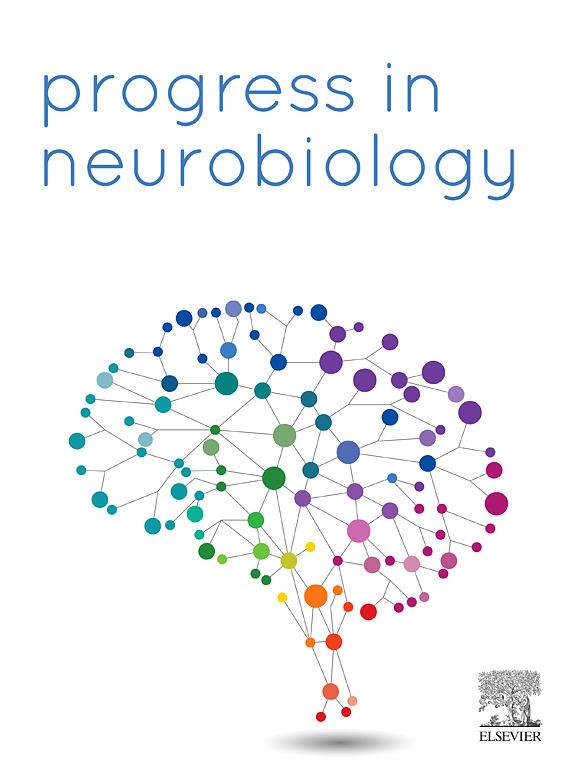神经退行性疾病中与嘌呤能相关的免疫反应。
IF 6.1
2区 医学
Q1 NEUROSCIENCES
引用次数: 0
摘要
免疫细胞的慢性激活可参与神经退行性疾病(包括阿尔茨海默病(AD)、多发性硬化症(MS)、帕金森病(PD)、亨廷顿病(HD)和肌萎缩侧索硬化症(ALS))等病症的发展。近年来,令人信服的证据表明,嘌呤能信号在神经免疫细胞功能中发挥着关键作用。细胞外释放的 5'-三磷酸腺苷(ATP)及其分解产物(ADP 和腺苷)通过激活多个受体家族,为复杂的嘌呤能信号传导提供了多功能基础。G蛋白偶联腺苷A2A受体、离子型P2X受体和G蛋白偶联P2Y受体可产生ATP和其他核苷酸,它们在中枢神经系统的神经元、小胶质细胞和星形胶质细胞以及外周免疫细胞中含量丰富,分布广泛。这些受体与炎症密切相关,其功能相互作用可能会影响炎症反应中错综复杂的嘌呤能信号转导。在本综述中,我们将研究嘌呤能受体在神经免疫细胞功能中的作用,尤其侧重于 A2AR、P2X4 和 P2X7 及其与特定神经退行性疾病的可能相关性。了解嘌呤能受体相互作用的分子机制对于促进开发针对神经退行性疾病的有效免疫疗法至关重要。本文章由计算机程序翻译,如有差异,请以英文原文为准。
Purinergic-associated immune responses in neurodegenerative diseases
The chronic activation of immune cells can participate in the development of pathological conditions such as neurodegenerative diseases including Alzheimer’s disease (AD), Multiple Sclerosis (MS), Parkinson’s disease (PD), Huntington’s disease (HD) and Amyotrophic Lateral Sclerosis (ALS).
In recent years, compelling evidence indicates that purinergic signaling plays a key role in neuro-immune cell functions. The extracellular release of adenosine 5′-triphosphate (ATP), and its breakdown products (ADP and adenosine) provide the versatile basis for complex purinergic signaling through the activation of several families of receptors. G-protein coupled adenosine A2A receptors, ionotropic P2X and G-protein coupled P2Y receptors for ATP and other nucleotides are abundant and widely distributed in neurons, microglia, and astrocytes of the central nervous system as well as in peripheral immune cells. These receptors are strongly linked to inflammation, with a functional interplay that may influence the intricate purinergic signaling involved in inflammatory responses.
In the present review, we examine the roles of the purinergic receptors in neuro-immune cell functions with particular emphasis on A2AR, P2X4 and P2X7 and their possible relevance to specific neurodegenerative disorders. Understanding the molecular mechanisms governing purinergic receptor interaction will be crucial for advancing the development of effective immunotherapies targeting neurodegenerative diseases.
求助全文
通过发布文献求助,成功后即可免费获取论文全文。
去求助
来源期刊

Progress in Neurobiology
医学-神经科学
CiteScore
12.80
自引率
1.50%
发文量
107
审稿时长
33 days
期刊介绍:
Progress in Neurobiology is an international journal that publishes groundbreaking original research, comprehensive review articles and opinion pieces written by leading researchers. The journal welcomes contributions from the broad field of neuroscience that apply neurophysiological, biochemical, pharmacological, molecular biological, anatomical, computational and behavioral analyses to problems of molecular, cellular, developmental, systems, and clinical neuroscience.
 求助内容:
求助内容: 应助结果提醒方式:
应助结果提醒方式:


